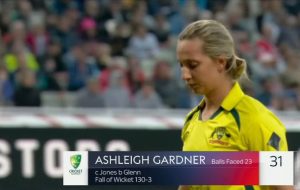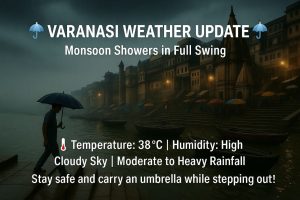AU-W Vs NZ-W : Australia Women Vs New Zealand Women T20 World Cup

AU-W Vs NZ-W : Australia Women Vs New Zealand Women T20 World Cup
AU-W Vs NZ-W : Australia Women Vs New Zealand Women T20 World Cup
AU-W Vs NZ-W match, let’s take a detailed look at the pitch report and key factors influencing the game. The match will likely be played at a prominent stadium in Australia or New Zealand, where pitch conditions can vary based on the venue. Here’s a comprehensive pitch analysis with key points:
Venue and General Pitch Conditions
While the specific venue for the match may vary, both countries are known for pitches that tend to offer balanced conditions between bat and ball. In Australian venues like the Melbourne Cricket Ground (MCG) or Sydney Cricket Ground (SCG), the pitches often favor fast bowlers early on due to the bounce and pace. On the other hand, New Zealand’s pitches like Eden Park or Hagley Oval are known for being slightly slower, offering more assistance to swing bowlers.

Regardless of the location, one can expect the pitch to offer something for everyone, with the balance shifting depending on weather conditions, pitch preparation, and toss results. Here are the key aspects of a typical AU-W vs NZ-W pitch scenario:
Key Factors of the Pitch : AU-W Vs NZ-W
1. Pace and Bounce Early On:
- Whether in Australia or New Zealand, the pitch will likely assist seamers in the initial overs. Fast bowlers like Megan Schutt for Australia or Sophie Devine for New Zealand should extract bounce and movement early on, particularly if there is any grass on the surface.
- In Australian conditions, fast bowlers benefit from extra bounce, while in New Zealand, swing may be more prominent due to atmospheric conditions. Teams batting first need to be cautious in the first few overs and avoid losing early wickets.
2. Middle Overs Batting Advantage:
- After the early overs, the pitch tends to settle down, allowing batsmen to play their shots. Australia’s batters like Alyssa Healy and Ellyse Perry may look to build partnerships in these middle overs, capitalizing on a flattening surface.
- In New Zealand, batters such as Suzie Bates and Amelia Kerr should aim to consolidate during this phase, with boundaries becoming easier to find once the pitch loses its initial movement.
3. Spinners in the Middle Overs:
- Both teams boast quality spinners who will look to control the middle overs. Ashleigh Gardner for Australia and Amelia Kerr for New Zealand will likely bowl around the 7th to 15th over mark, exploiting any wear in the pitch.
- While spinners may not get a massive turn from the surface, they could use variations in flight and pace to outfox batters. Slower bowlers are expected to be effective in containing runs and taking crucial middle-order wickets.
4. Dew Factor in the Second Innings:
- Depending on the time of day, dew can play a critical role, particularly in evening matches. In locations where dew is expected, such as Australia’s coastal cities, chasing teams often have an advantage. The ball skids onto the bat, and bowlers may struggle to grip the ball properly.
- In such cases, teams winning the toss may prefer to bowl first, taking advantage of the dryer conditions and putting the opposition under pressure.
5. Impact of Weather:
- In New Zealand, weather plays a significant role in how the pitch behaves. Overcast conditions can favor swing bowling, so teams with strong swing bowlers, like New Zealand’s Jess Kerr, will hope for some cloud cover.
- In contrast, Australian pitches, particularly in cities like Perth or Adelaide, tend to be dryer and offer more consistent bounce. However, the weather can vary across regions, influencing how much pace or turn bowlers might get.
6. Toss and Decision to Bat/Bowl:
- The toss will be crucial in determining the approach of both teams. If the pitch has a green tinge, expect the team winning the toss to bowl first, taking advantage of early seam movement.
- If it’s a flat wicket, captains like Meg Lanning or Sophie Devine might prefer to bat first, especially in day matches where conditions remain consistent throughout.
7. Boundaries and Field Placement:
- Australian grounds tend to have larger boundaries compared to those in New Zealand. Batters need to be more selective with their shots, focusing on rotating the strike rather than relying on boundary-hitting alone. In contrast, New Zealand’s grounds often have shorter straight boundaries, making power-hitting more rewarding.
- Fielders will need to be sharp in the deep, and both teams must place emphasis on saving runs in high-scoring encounters. Ground fielding and catching will be crucial, particularly in tight contests.
Key Player Matchups : AU-W Vs NZ-W

1. Megan Schutt vs Suzie Bates:
- Schutt, with her ability to swing the new ball, will look to target New Zealand’s experienced opener, Suzie Bates. Early wickets for Australia will disrupt New Zealand’s batting plans.
2. Sophie Devine vs Australian Spinners:
- Devine is a powerful hitter who thrives on pace, but she may find it challenging against Australia’s spin trio of Gardner, Wareham, and Jonassen. How she handles the spin in the middle overs could define New Zealand’s innings.
3. Ellyse Perry vs Lea Tahuhu:
- Perry’s ability to accelerate during the middle overs will be tested by Tahuhu’s pace and accuracy. If Perry is set, Australia will be in a commanding position.
Strategies for Both Teams : AU-W Vs NZ-W
Australia Women:
- Focus on attacking early with the new ball and dismissing New Zealand’s top order cheaply.
- Utilize spin to control the middle overs, with Gardner and Jonassen tying down the run rate.
- Bat aggressively in the powerplay and set a platform for big hitters like Tahlia McGrath and Grace Harris to capitalize in the death overs.
New Zealand Women:
- Look for early breakthroughs through swing and seam, utilizing bowlers like Jess Kerr and Tahuhu.
- Rotate the strike in the middle overs and build partnerships to set up a strong finish, avoiding losing wickets to spin.
- Be mindful of field placements in Australian grounds to save boundaries, particularly in the large outfields.
Conclusion
The Australia Women vs New Zealand Women T20 match will likely be a close contest, with both teams bringing strong players to the field. The pitch at the venue will be key to determining strategy, but balanced conditions suggest that all departments—batting, bowling, and fielding—will play a role in the outcome. Chasing may provide an advantage in the second innings due to potential dew, but early breakthroughs with the new ball will be crucial for both teams. Expect a thrilling encounter filled with tactical battles, skilled performances, and exciting moments.








Hey there, I think your site might be having browser compatibility issues. When I look at your blog in Ie, it looks fine but when opening in Internet Explorer, it has some overlapping. I just wanted to give you a quick heads up! Other then that, wonderful blog!
w6o3t0